Making empanada dough from scratch transforms your empanadas from good to extraordinary. I give you two fat options: butter for a rich, slightly flaky texture, or lard (beef tallow) for the traditional approach that creates incredibly tender, pliable dough that's easier to work with.
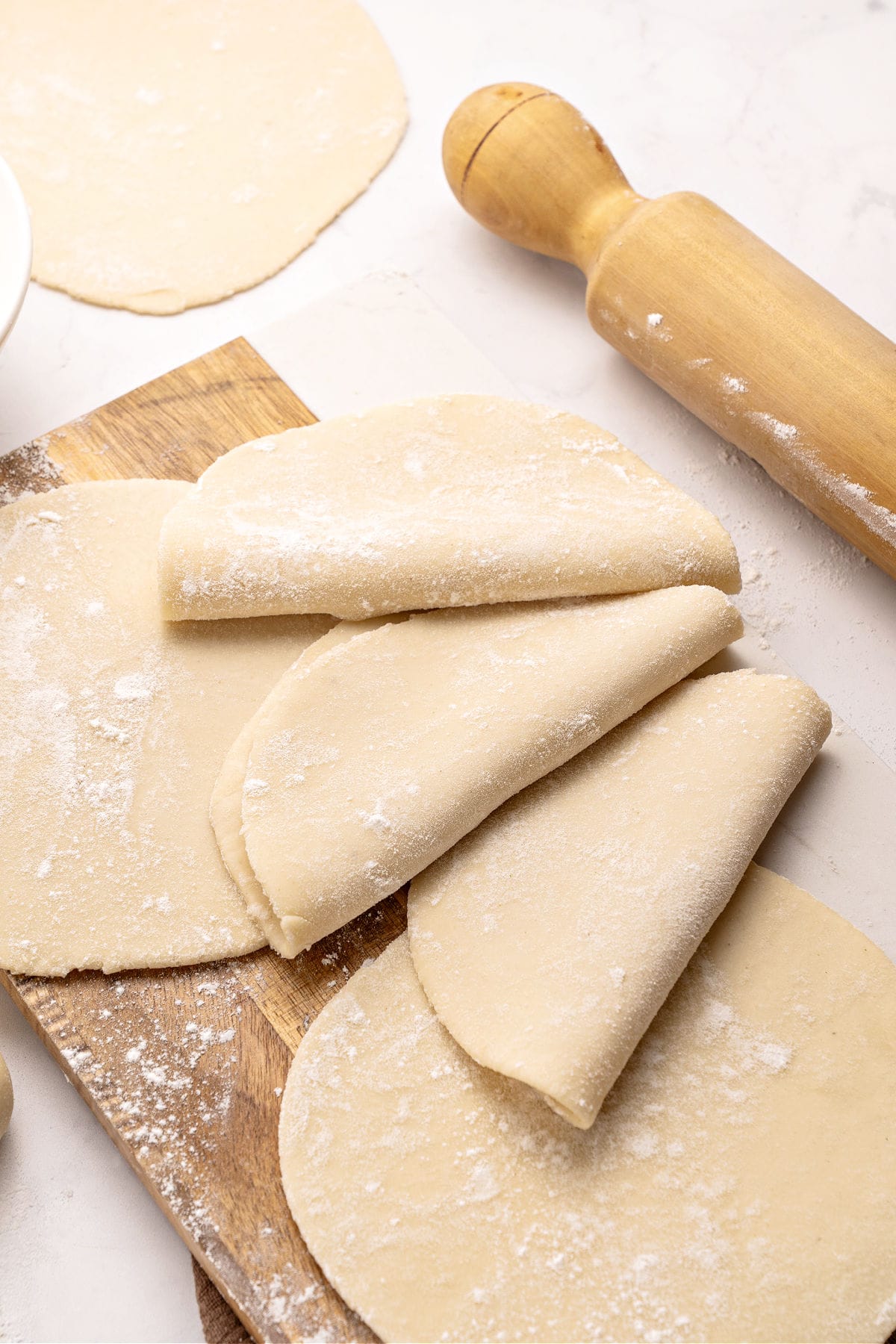
Family recipe
We eat empanadas constantly here in Argentina; they're our go-to solution when we don't want to spend much, nobody feels like cooking, or unexpected guests show up and we need to stretch the meal.
They are fried or baked turnovers with pastry and filling, a classic food and part of our vintage Latin American recipes.
Shapes and crimpings vary, though some are classic and easy to spot. The old-fashioned folded crimping is meant for classic ground beef empanadas or my favorite meat empanadas (knife-cut), ham and cheese are shaped like tortellini, the fork crimping usually goes to the corn empanadas and so forth.
Why homemade dough?
While there are plenty of empanada shops and delivery options, making them at home is a labor of love, especially the dough. It's similar to making pizza from scratch, requiring several steps, but the results are worth the effort.
Lard (beef tallow) or butter? Both work, but the former is more traditional. Purists might say the only way, but hey, times change, we adapt. Supermarkets here carry beef tallow, but I know it's not the case everywhere.
Store-bought discs work in a pinch when you're short on time, but homemade dough gives you complete control over texture, flavor, and freshness-plus that satisfaction of making everything from scratch.
Testing Notes
- Types of fat: Beef tallow produces more authentic results and handles beautifully when sealing empanadas. It's the best option for baked empanadas. Butter adds richness and creates slight layers, though it can be trickier to work with in warm weather. It's the best option for fried empanadas as it can be rolled thin.
- Salt technique: Always dissolve the salt in warm water first, like making a brine, before adding to the flour. This ensures even distribution and proper integration throughout the dough.
- Resting is non-negotiable: The dough needs time for gluten to relax and fat to properly hydrate the flour. Skip this step, and rolling becomes a nightmare.
- Make-ahead tip: Both fat versions freeze exceptionally well. Make large batches of discs and store them individually between freezer sheets-trust me on this! If you stack them without separation, you'll remember me when they freeze together into an inseparable mess. Once individually separated, you can stack and wrap them together before freezing.

Ingredients
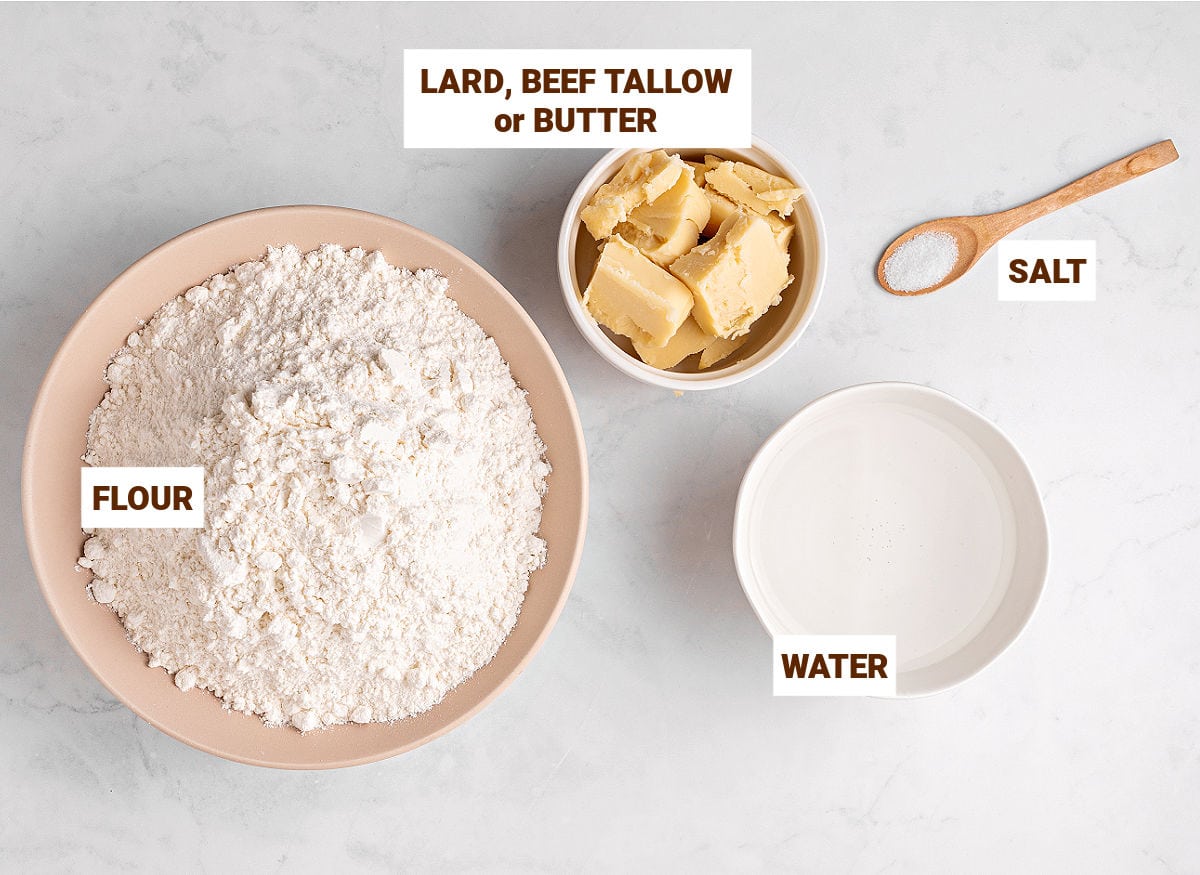
Process steps
This is a straightforward dough, and you don't need mixers, just a bowl and a wooden spoon or spatula and your hands.
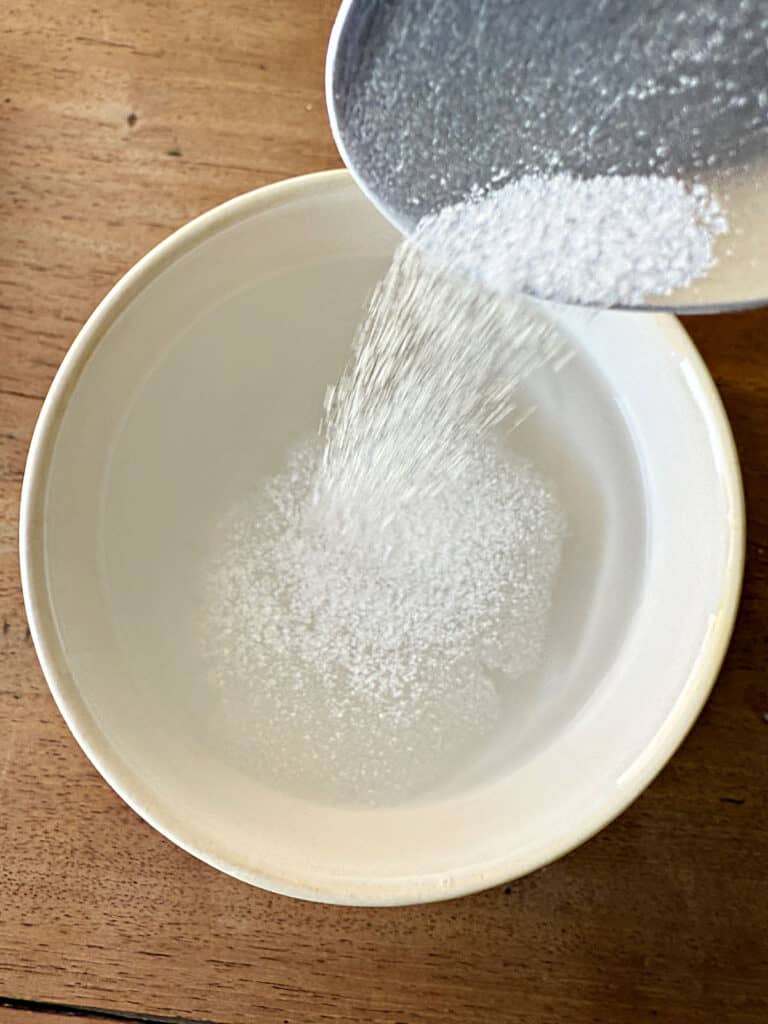
Salt + water
Dissolve the salt completely in warm water, stirring until no crystals remain. Don't skip this step!
Set aside to cool slightly.
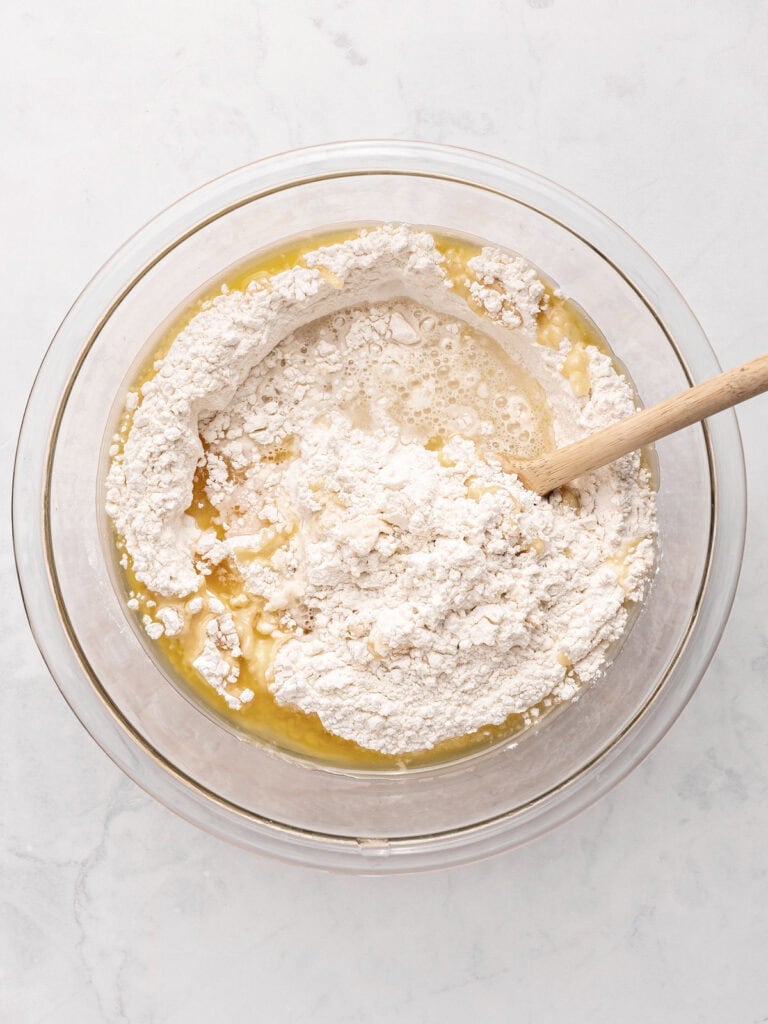
Stir ingredients
The melted fat should also be warm or it will not integrate easily and well.
Make a well in the center of the flour mixture. Pour in the salt water and melted fat gradually while mixing with a fork or spoon, then switch to your hands when it becomes too thick to stir.
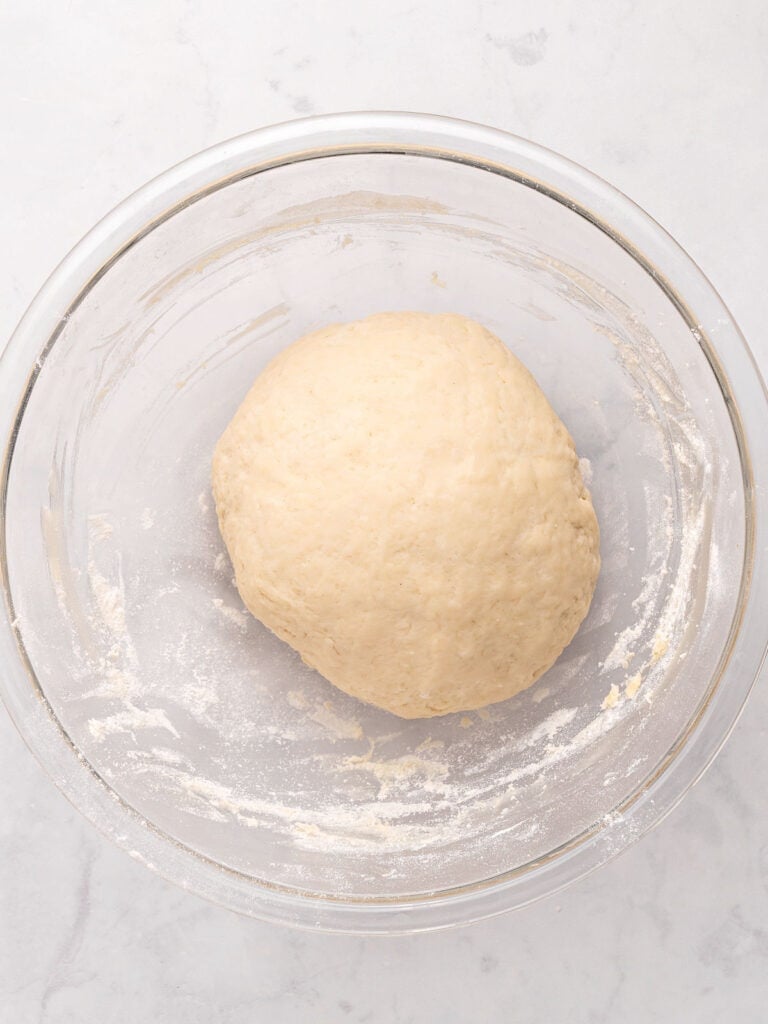
Form ball
Turn the shaggy dough onto a clean surface and knead just until it comes together-about 2-3 minutes. Don't overwork it; the dough should be smooth but not overly elastic. A dough scraper is a handy tool for this.
Transfer it to the bowl and let it rest before cutting and rolling.
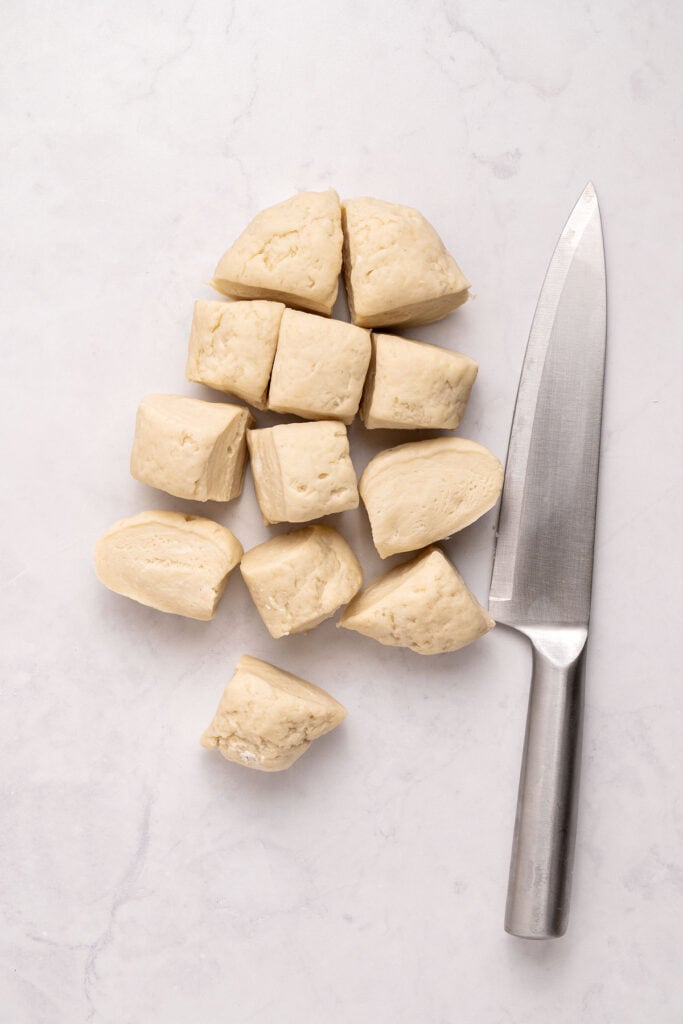
Portion
Use a large kitchen knife and a scale (ideally) to cut walnut-sized portions (about 25-30g each). Keep unused portions covered while you work.
If you don't have a kitchen scale (it's an invaluable baking tool you might consider buying) , make a rough rectangle and eyeball similar pieces.
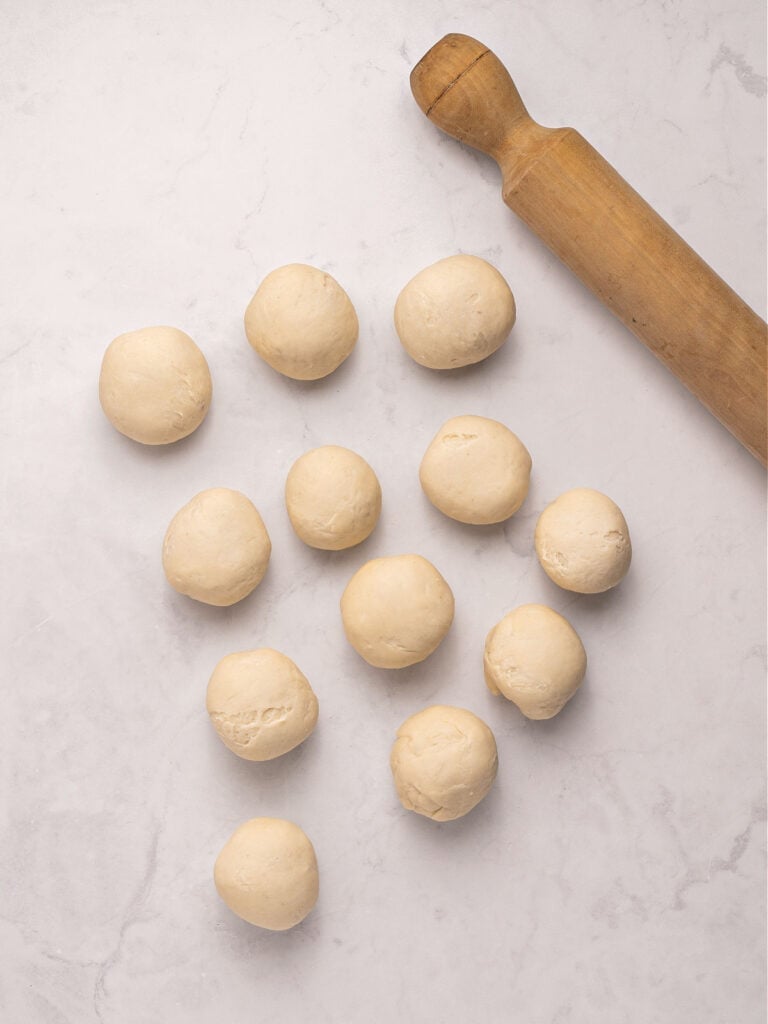
Form into balls
Form each piece into a small ball by cupping the dough with the palm of your hand and making circles against the surface.
Or roll each portion between your palms.
Each ball should be about 1 ounce (30 grams).
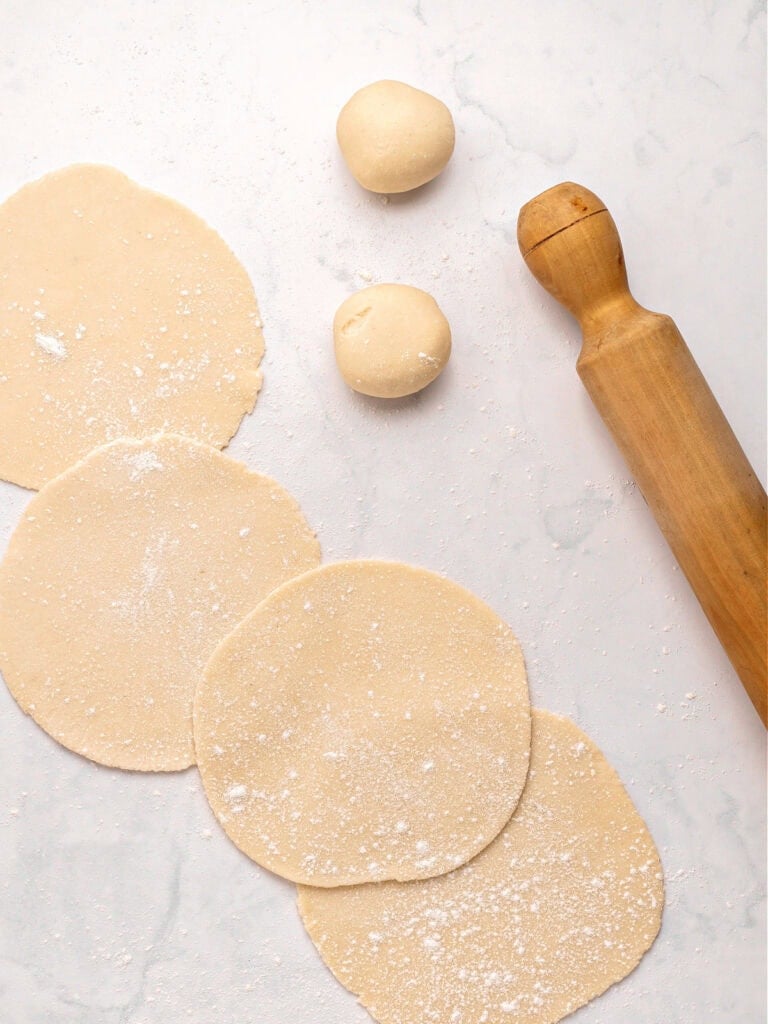
Roll discs
On a lightly floured surface, roll each ball from the center outward, rotating the dough frequently to maintain a round shape. Aim for 4-5 inch circles, thin enough to see your hand through but not so thin they tear.
You want dough circles as round and even as possible, about ⅛ inch thick. It takes a little practice.

If you made this recipe and loved it, you can comment below and leave a 5-star ⭐️ review. Also, if you had issues, let me know so we can troubleshoot together.
You can also subscribe to our FREE email series 'Baking the Best' and our regular newsletter. Or follow and save my recipes on Pinterest.
As an Amazon Associate, I earn from qualifying purchases. Read my disclosure policy.

Homemade Empanadas Dough (4 ingredients)
Ingredients
- ¾ to 1 cup warm water
- 1 teaspoon salt
- 4 cups all-purpose flour
- 7 tablespoons beef tallow, lard, or unsalted butter, almost ½ cup, melted and warm
Instructions
- In a small bowl stir 1 teaspoon salt in ¾ to 1 cup warm water until completely dissolved. Don't skip this step.
- In a large bowl, place 4 cups all-purpose flour and add 7 tablespoons beef tallow, lard, or unsalted butter, melted and warm.
- Gradually add the warm salted water. Start mixing from the center outward, incorporating flour from the edges. When you can't mix any more, transfer the shaggy mass to a work surface or clean counter.
- Knead by hand for about 3-4 minutes until a smooth, uniform dough forms. It should not be sticky. Don't overwork it.
- Cover the dough with a clean towel or plastic wrap (I transfer it again to the same bowl, but you can use a clean one) and let it rest at room temperature for at least 30 minutes and up to 2 hours. This resting time helps relax the gluten and makes the dough easier to roll out.
- With a large kitchen knife or dough cutter, divide the dough into 1 ounce (30 grams) pieces. On a lightly floured surface with a rolling pin, roll each ball from the center outward, until it's about 2-3 mm thick, rotating the dough frequently to maintain a round shape. Aim for 5-6 inch circles. You can also roll the whole dough (like you would pie dough) and use a 5.5-6 inch round cutter (12 to 15 cm in diameter) to cut out discs.
- You can stack them with a bit of flour or parchment paper in between so they don't stick.

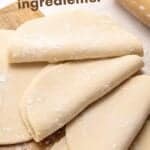
Paul Riehl says
The dough was just as you described. Flaky and rich. It was very easy.